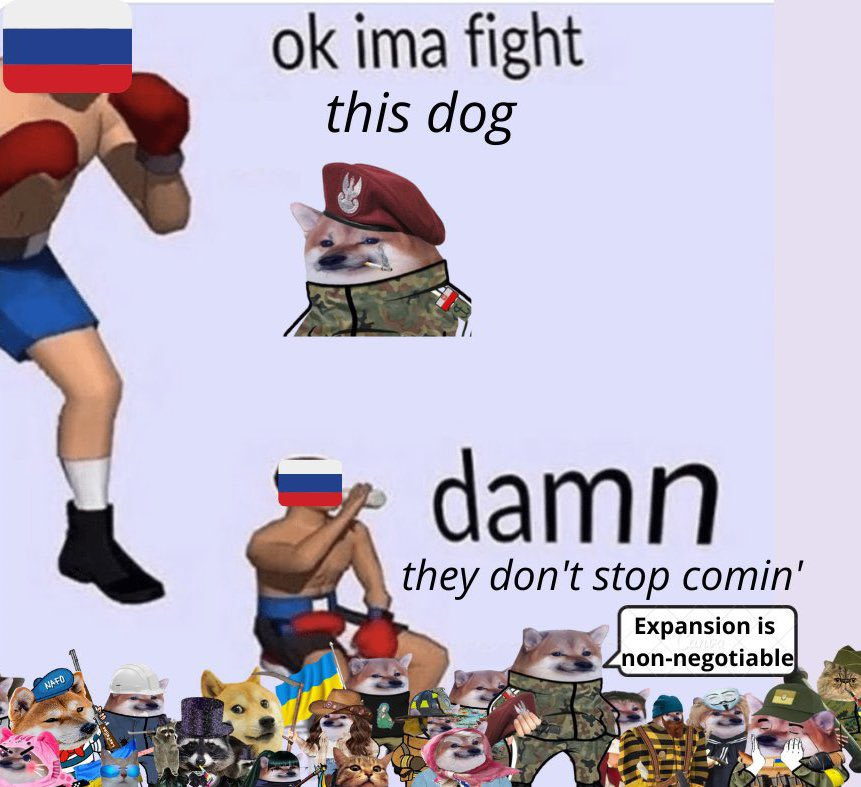The Korybko Curve: A NAFO Meme Theory of Online Collapse
Charting the rise and fall of involuntary virality among pro-Kremlin influencers
Every once in a while, a chart emerges that captures a phenomenon so precisely, you wonder how we ever explained it before. The Korybko Curve is one of those. Born in the memetic trenches of NAFO — the North Atlantic Fellas Organisation — the curve offers a concise visual explanation for how certain pro-Kremlin voices experience a brief, humiliating spike in visibility before descending into algorithmic obscurity.
It’s funny, but it’s also real. Here’s how it works.
📈 Phase I: Rapid Rise in Engagement
It begins innocently enough — a geopolitical influencer with Kremlin-adjacent leanings tweets something provocative:
NATO expansion is responsible for the Ukraine crisis.
Russia is defending multipolarity.
Zelensky is a puppet of the West.
The account might not have much reach under normal conditions. But then: NAFO notices.
The tweet gets quote-tweeted, dunked on, and swarmed with Shiba Inu avatars wielding 🐶 energy and unapologetic mockery. Engagement surges.
The ratio begins.
🔝 Phase II: Peak Engagement
This is the highest high — but it's also the turning point.
At the top of the curve, the influencer is now the main character of Twitter. But not in the way they intended. Their tweet is viral not because it’s persuasive — but because it’s become the day’s meme-fodder.
Every reply is a Shiba with a flag. Every quote tweet is sardonic. Every engagement is mockery.
And at the very summit of this engagement spike sits the inevitable realization:
“Replying to NAFO was a mistake.”
📉 Phase III: Decline in Engagement
Once the dunk cycle has run its course, the numbers start to collapse.
People move on. The quote tweets dry up. The replies become repetitive. Engagement evaporates. The account blocks NAFO, posts a thread about “psyops,” or retreats into Telegram.
Any attempt to reclaim narrative control falls flat. The curve has passed the peak. The decline is irreversible.
🫥 Phase IV: Return to Obscurity
And then: silence.
The influencer, once visible, fades. Their tweets no longer provoke outrage — just apathy. The algorithm no longer boosts them. The audience has moved on.
They are back where they began — or worse. Damaged credibility. A smaller audience. Muted replies.
They have entered what the Korybko Curve defines as obscurity.
🧠 Why “Korybko”?
The curve is named — with tongue firmly in cheek — after Andrew Korybko, a prolific writer for state-aligned media like Sputnik and CGTN, known for his high-density geostrategic takes. Korybko’s interactions with NAFO became legendary: a mixture of attempted rebuttal, over-explanation, and unintentional self-parody.
Yorkshire Bylines reported on the size of Korybko’s Head in 2022
But the term isn't about Korybko alone. He merely became the archetype. The curve applies to any figure — Scott Ritter, Jackson Hinkle, or RT correspondents — who experiences the NAFO engagement cycle:
Post something spicy.
Get ratioed into the algorithm.
Lose control of the narrative.
Return to irrelevance.
🗺️ A Meme That Maps Power
The Korybko Curve isn’t just satire. It’s a kind of memetic analysis — a reflection of how power, propaganda, and ridicule interact on the modern internet.
It shows that in a decentralised media space, state-sponsored narratives aren’t just countered with facts. They’re disarmed with mockery, ritualised dunking, and collective memes. NAFO weaponises engagement — not to argue, but to expose.
And when the curve takes hold, there’s no winning it.
📊 The Graph
The curve visually models this process:
A sharp initial climb fuelled by ridicule
A peak of memetic saturation
A steep fall as attention fades
A long tail of silence and obscurity
It's a lifecycle. And it repeats, over and over.
🧵Final Thoughts
The Korybko Curve explains not just the what of viral collapse — but the why. In the attention economy, you don’t always want to go viral. Especially when you’ve made yourself the target of a highly motivated, highly memetic crowd like NAFO.
Because at the top of the curve, you might be the most engaged-with voice on the timeline. But you’re not being taken seriously.
You’re being ratioed — into irrelevance







